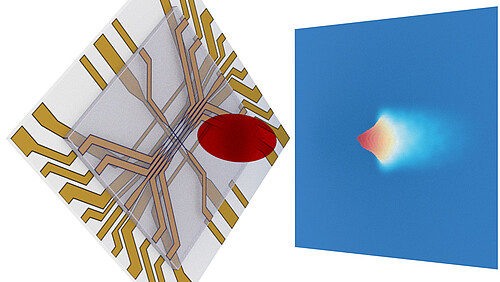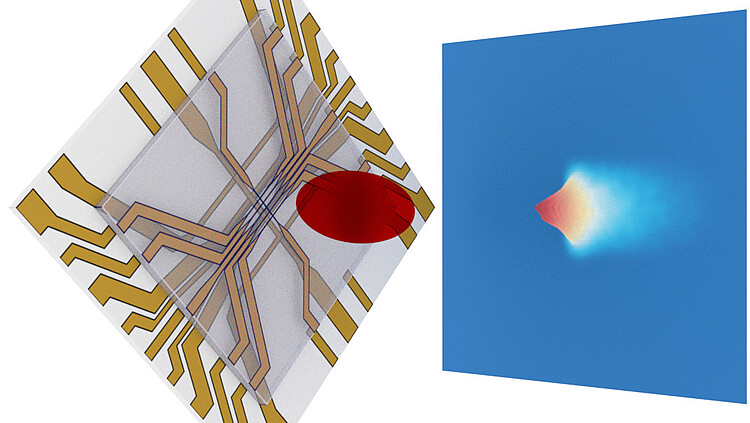The wave property of matter can be used in matter wave interferometers for the precise measurement of different quantities, such as rotations and accelerations, as well as for the determination of fundamental natural constants, for example the gravitational constant. Ultracold atomic ensembles, so-called Bose-Einstein condensates (BECs), are particularly suited for this purpose, as macroscopic wave properties only occur at very low kinetic energies.
Researchers at Leibniz Universität Hannover, the Centre for Applied Space Technology and Microgravity at the University of Bremen, Humboldt-Universität Berlin and Johannes Gutenberg-Universität Mainz have now succeeded in realising a matter wave lens system that almost completely stops the expansion of the BEC by exploiting the repulsive interactions within the BEC.
The paper was written as part of the DLR joint project QUANTUS and was supported by the Centre for Quantum Engineering and Space-Time Research (QUEST) and the Cluster of Excellence Quantum-Frontiers.
Original article:
Collective-Mode Enhanced Matter-Wave Optics
Christian Deppner, Waldemar Herr, Merle Cornelius, Peter Stromberger, Tammo Sternke, Christoph Grzeschik, Alexander Grote, Jan Rudolph, Sven Herrmann, Markus Krutzik, André Wenzlawski, Robin Corgier, Eric Charron, David Guéry-Odelin, Naceur Gaaloul, Claus Lämmerzahl, Achim Peters, Patrick Windpassinger, and Ernst M. Rasel
Phys. Rev. Lett. 127, 100401
DOI: 10.1103/PhysRevLett.127.100401









